When you’ve never driven a hillclimb course before and you find yourself behind the wheel of a car with a deafeningly loud exhaust, hurtling up a steep and narrow ribbon of Tarmac at what feels like a million miles per hour, a few thoughts run through your head.
As you set off from the start line in a cloud of tyre smoke, you try to recall which lines the instructors told you to take through the first section. This initial intention is made more difficult, however, by the fact the car is moving almost more quickly than you can think.
At the end of your first run, you breathe a sigh of relief that you and the car are in one piece. Then, if you’re ambitious, foolhardy, or maybe a bit of both, you’ll find yourself thinking: “I can go quicker than that.” This is where you start to make progress.
The venue for my baptism of fire into the world of hillclimbing is Shelsley Walsh, tucked away in the hills of rural Worcestershire. The course is notable among hillclimbs in that it’s the oldest unchanged and continuously operational motorsport venue in the world, with events having been staged there every year (with the exception of both World Wars) since 1905.
Hillclimbing was originally done on public roads, in Edwardian cars, and the goal was to see which car and driver could make it the farthest up a steep course. This didn’t please the locals, though, and the events had to be moved to private grounds.
In the case of Shelsley Walsh, over a century ago a car-friendly farmer offered up his driveway, which has been a hillclimb course ever since; a working farm still sits at the top of the run. Aware of the long history of Shelsley Walsh, my goal was to get to grips with the course and do my best to set a respectable time.
The first order of business was a briefing from Gary Hall, general manager of the track, and Gary Thomas, a course instructor. Hall explained that the all-time record is 22.58 seconds, set by Martin Groves during the 2008 British Hillclimb Championship. Although I wasn’t going to be breaking any records, the guarantee was that I would have fun. Thomas advised me that the key mindset I should have was: “Let the track come to you.”
I then accompanied fellow instructor Peter Cox on a circuit walk to get an idea of the track dimensions. You don’t really appreciate the steep angle of the climb until you walk up it. It’s 914 metres long and, in that space, rises 100 metres; it’s also very enclosed at points, and becomes as narrow as just 3.66 metres.
I asked Cox what’s the biggest mistake first-timers make the first time they tackle Shelsley Walsh, and was told it was without doubt braking too early for corners.
Bearing this in mind, I got behind the wheel of my car for the day. My host was Abarth, who had provided a fearsome-looking 695 70th Anniversario. This Fiat 500 on steroids has a 1.4-litre four-cylinder petrol engine producing 178bhp, takes 6.7 seconds to cover the 0-62mph sprint and can reach 140mph; I’d see about half that speed on my runs, plenty fast enough on a tight track like Shelsley Walsh.
Firing up this £31,000, limited-edition Abarth, I selected Sport mode to sharpen the throttle response and bring the Monza quad exhausts to life. Drawing up to the start line, a chock was placed behind a rear wheel, after which I built up the revs and – on the green light – let the 695 fly.
I tore up the narrow track, trying to recall everything I’d just learned during my walkaround and instruction.
The 695’s wheels screeched off the line, while the exhausts let out a tremendous roar. As I quickly built up speed, the banks on either side of us rose; when you feel that enclosed on a narrow track, it’s easy to forget that there are racing lines to be followed in corners. What’s more, the hillclimb’s bends are blind; courage was required.
My eyes were on the track ahead at all times, so I wasn’t looking at the G-force reading displayed on the Abarth’s instrument panel, but I was certainly being pressed into my seat as I flung the 695 through the turns.
Crossing the finish line at 68mph, I knew I’d made some mistakes; I’d braked too early, lifted off when I didn’t need to and hadn’t held the correct lines in the corners. Surely I could improve on my first time of 45.44 seconds?
My second run was better. I kept tighter to the corners and steeled myself to brake later. The result was 43.94 seconds, shortly followed by a third run where I managed 41.31 seconds, despite not revving anywhere near high enough as I took off from the start line.
As I lined up for my fourth attempt, Thomas came past the window and I asked for some more advice. He said he’d noticed I was making too many steering inputs at the first two marker posts, and needed to keep the car straighter. I also clarified gearing with him, and he said I should be hitting the tachometer’s red line in third as I reached the sharp left-hander and sharp right-hander that make up the ‘Esses’ of Shelsley Walsh.
This was sound advice – I cut my time further to 40.98 seconds on the fourth run and then 40.27 on the fifth, crossing the line at 72mph, exhausts blaring. As I lined up for the sixth and final attempt, determined to set a sub-40-second time, I made a blistering start – my best yet. I also realised there was one key instruction I hadn’t followed, which was to be going full throttle, without lifting off, all the way along the track until I reached the Esses.
While I still didn’t have much experience of the track, and the idea of hitting a wall or bank and landing in the foliage held little appeal, it was do or die now, so it had to be done.
My prize was a time of 39.53 seconds, an improvement of almost six seconds over my first run, and the second-fastest time of the day – not bad when more experienced drivers were also putting the little Abarth through its paces.
The feeling of having achieved my goal was elating, and I have officially been bitten by the hillclimb bug.
Check out the best track day cars you can buy now...
from Sitewide RSS feed https://bit.ly/3xL46kC
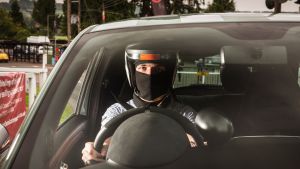

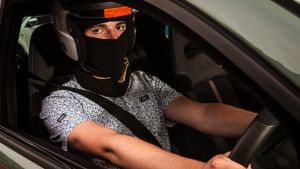
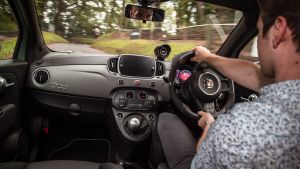
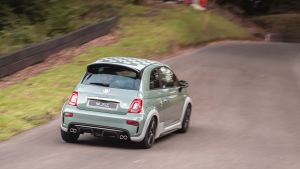
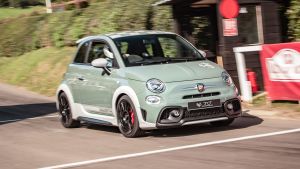
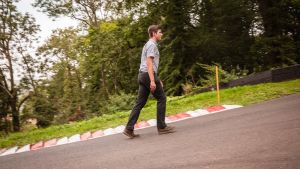

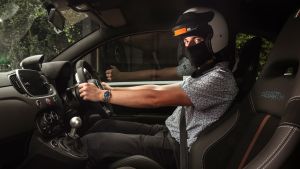
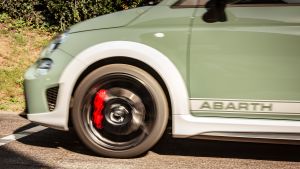
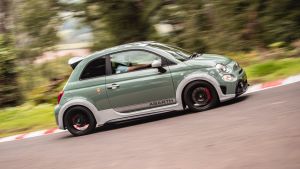
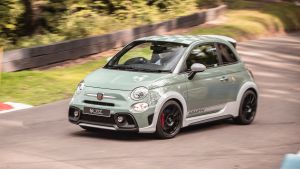
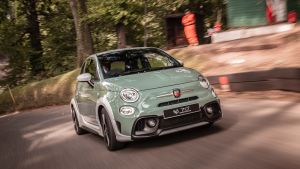
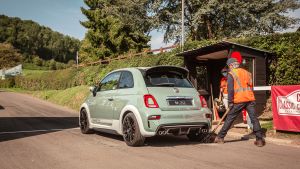
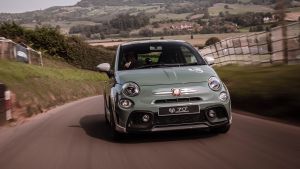
Comments
Post a Comment